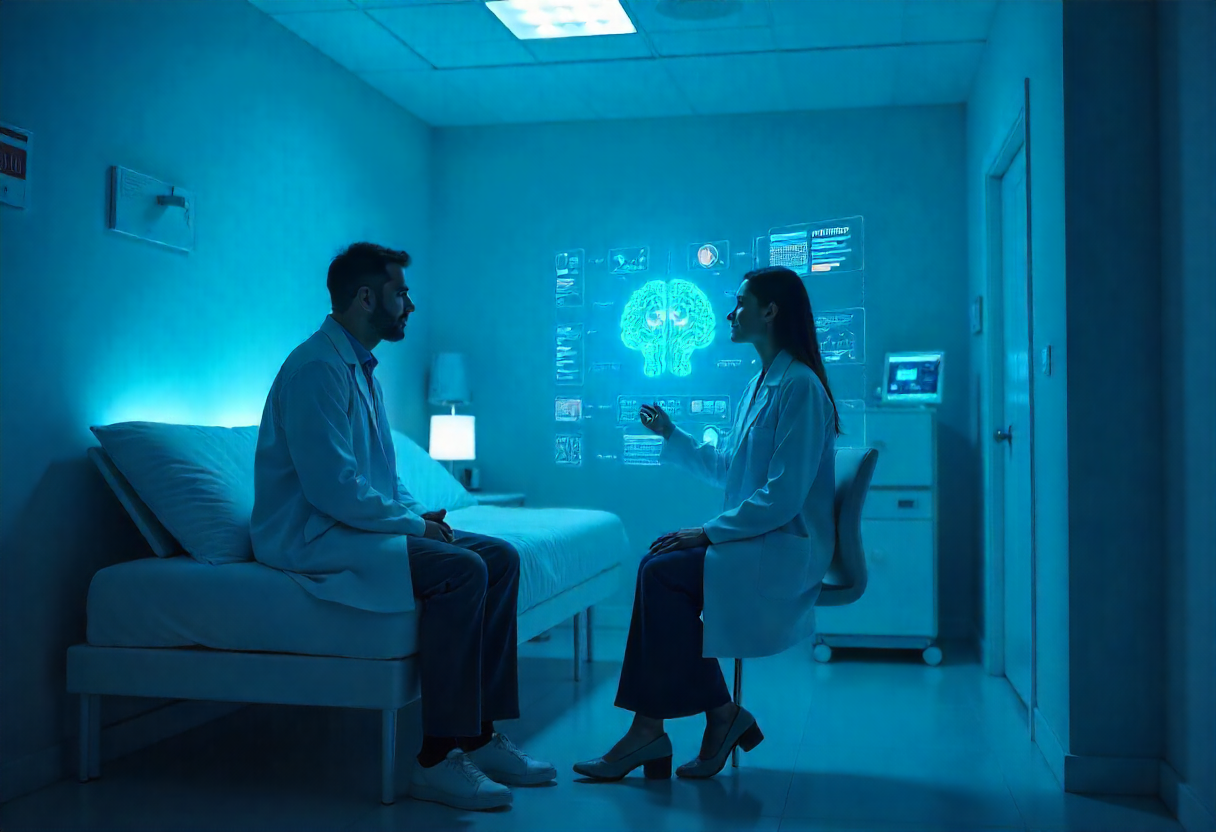Quick Summary
- AI is reshaping how healthcare professionals diagnose, document, and deliver care.
- AI tools for doctors now handle tasks from diagnostics to clinical decision support.
- AI medical scribes like DoraScribe reduce burnout and save valuable time.
- Real-world evidence shows AI improves accuracy, efficiency, and patient outcomes.
- In 2025, the conversation is no longer if AI will transform healthcare — it’s how deeply it already has.
AI in Healthcare: A New Era of Evidence-Based Efficiency
Artificial Intelligence has moved from experimental pilot projects to everyday practice. In 2025, AI in healthcare is not just a buzzword — it’s a backbone.
Hospitals, clinics, and private practices across the world rely on AI to make better, faster, and more evidence-based decisions.
Clinicians are turning to AI apps for doctors not only for speed but for safety, accuracy, and better patient experience. Whether it’s managing electronic health records, detecting anomalies in scans, or automating note-taking, AI has become a trusted digital assistant in modern medicine.
For example, AI tools in primary care now support physicians with everything from symptom triage to preventive health tracking — streamlining clinical operations and improving decision-making at every patient visit.
1. Predictive Analytics: Seeing the Future Before It Happens
Imagine spotting a cardiac event days before it happens. Predictive analytics makes that possible.
By analyzing EHR data, lifestyle patterns, and wearable data, AI can flag high-risk patients early. Hospitals use these insights to schedule preventive care, optimize staffing, and avoid costly readmissions.
In 2025, AI predictive systems have grown far more precise, blending genetics, imaging, and environmental data to personalize every prediction. The result: a shift from reactive to preventive medicine.
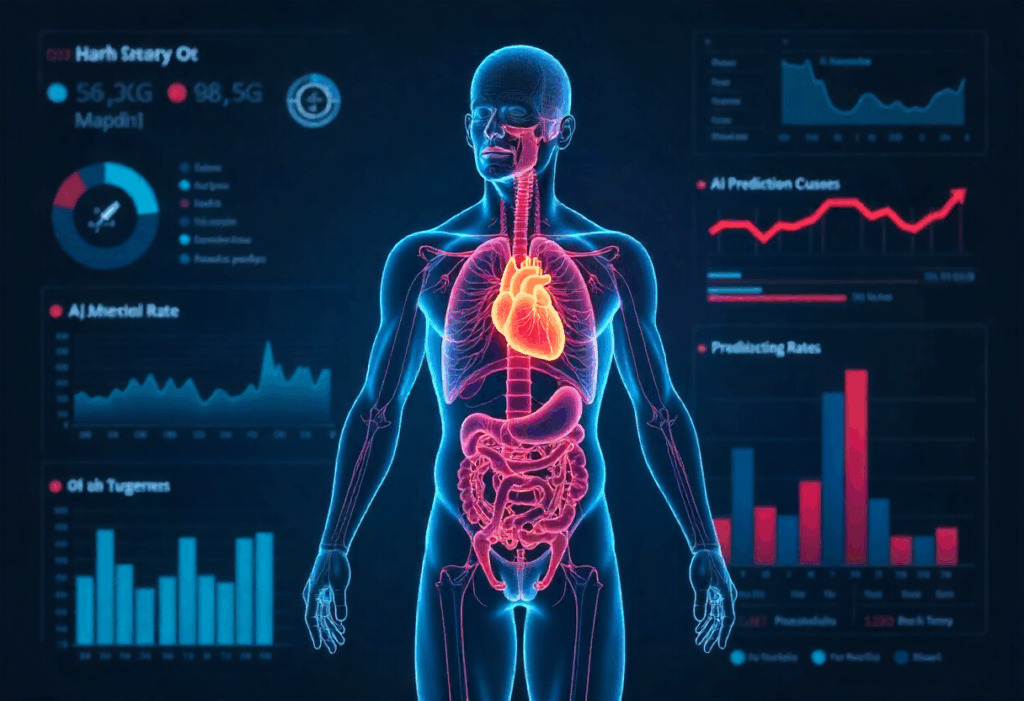
2. AI Diagnostic Tools: Faster, Sharper, Smarter
Radiology and pathology are two of the biggest beneficiaries of AI tools for doctors. AI-powered image recognition systems detect patterns in X-rays, MRIs, and CT scans that might be invisible to the human eye.
What’s changed since 2020?
Accuracy.
AI diagnostic systems are especially powerful when combined with imaging technologies, providing doctors with a second set of “digital eyes” to reduce human error and speed up analysis.
This technology is now expanding beyond traditional healthcare settings. For instance, AI tools for physiotherapists are helping physical therapy practices monitor recovery patterns and adjust exercise plans in real time. The result? More personalized, data-driven care plans and faster patient outcomes.
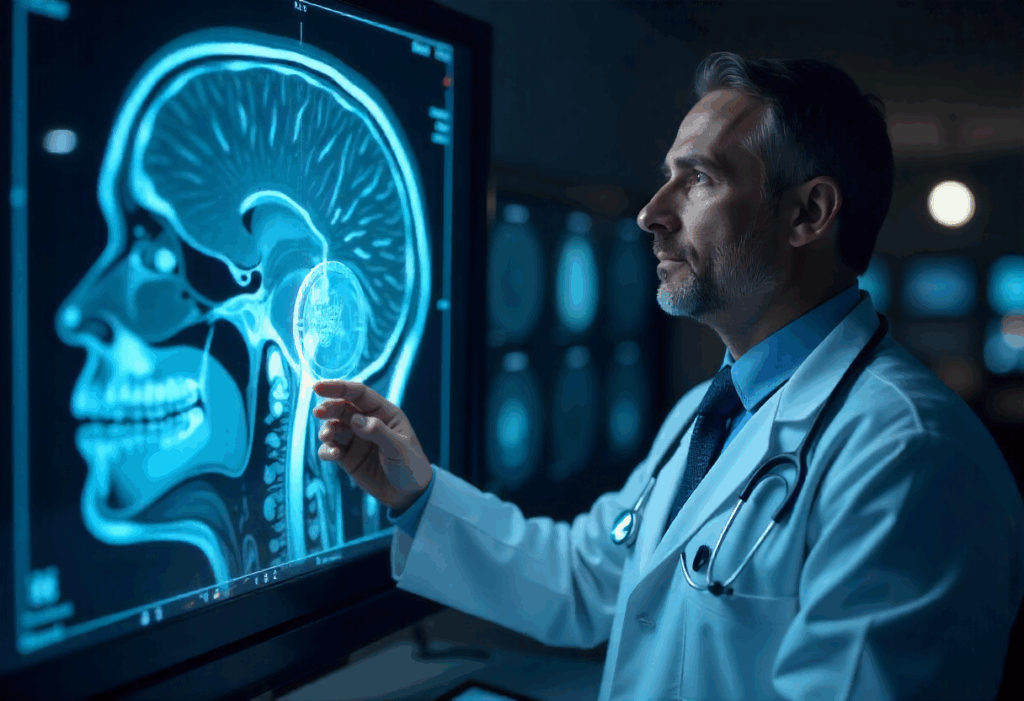
3. AI-Powered Medical Scribes: Goodbye Paperwork, Hello Patient Care
Documentation is one of the biggest time sinks for healthcare providers. Doctors often spend hours transcribing notes, updating charts, and writing follow-ups — time that could be spent with patients.
Enter AI medical scribes.
These tools listen to real-time patient interactions, automatically generating structured clinical notes.
The best AI tools for doctors go further by learning a provider’s language, formatting preferences, and EHR systems. DoraScribe’s adaptive learning engine ensures every note aligns with specialty-specific requirements and remains audit-ready.
Instead of typing or dictating, doctors simply speak naturally during consultations. The AI captures everything, summarizes key findings, and populates the correct sections of the record — within seconds.
The result?
- Up to 70% less administrative time
- Reduced burnout
- Improved chart accuracy
- More meaningful patient interactions
For a deeper look at how AI documentation tools are changing healthcare, explore AI Tools in Primary Care and see how real-time scribing enhances both efficiency and accuracy.

4. Personalized Treatment Planning: AI That Learns Each Patient
Another major breakthrough is personalized medicine powered by AI.
Machine learning models analyze genetic profiles, medication histories, and treatment outcomes across millions of patients to recommend the best care path for each individual.
For example:
- Oncology: AI identifies specific gene mutations to match patients with the most effective targeted therapies.
- Cardiology: Algorithms suggest medication adjustments based on a patient’s adherence and biometrics.
- Mental Health: AI monitors behavioral data and clinical notes to predict potential relapses before symptoms worsen.
This level of personalization was impossible before large-scale AI integration — now, it’s becoming the new clinical standard.
To see how this works in practice, explore AI tools for chiropractors — a look into how intelligent algorithms are modernizing spine health management and improving diagnostic precision for musculoskeletal conditions.
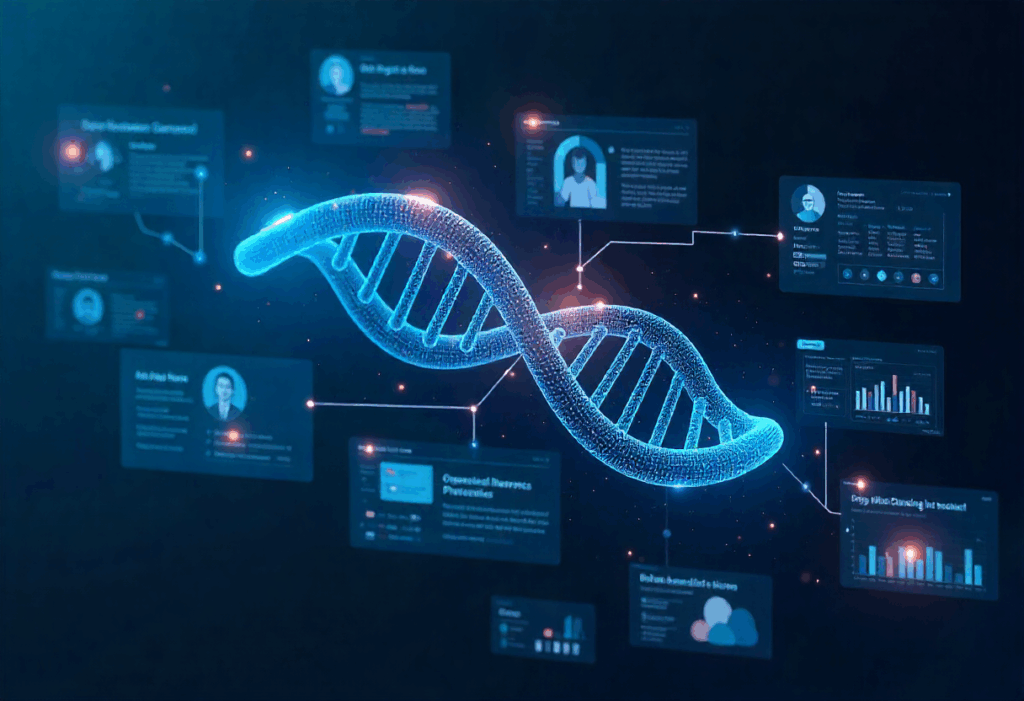
5. Virtual Health Assistants: AI Apps for Doctors and Patients
AI-driven virtual assistants have evolved far beyond simple chatbots.
Today’s assistants can triage patient questions, schedule appointments, and even assist doctors during live consultations.
Some systems now act as clinical copilots, pulling up relevant research, medication data, and decision trees in real time.
They help doctors make faster, more informed decisions without breaking their workflow.
Meanwhile, patient-facing assistants monitor adherence, remind users to take medications, and alert clinicians if something seems off — building a continuous loop of care.

6. Administrative Automation: Cutting Costs, Not Corners
Hospitals also use AI tools for doctors and staff to manage scheduling, billing, and insurance workflows.
AI systems process claims, detect errors, and predict denials — improving reimbursement rates and cutting operational costs.
This kind of backend automation often goes unnoticed, but it’s one of the most impactful AI use cases in healthcare.
When clinicians spend less time on admin tasks, they can redirect their focus toward patient outcomes — exactly where it belongs.

The 2025 Outlook: From Assistive to Autonomous
In 2025, the healthcare industry isn’t just experimenting with AI — it’s integrating it at every level.
The technology has matured from niche use cases to an essential infrastructure that supports physicians, patients, and systems alike.
The most successful AI solutions share three traits:
- Evidence-based design
- Transparency in data and decisions
- Integration with existing clinical workflows
AI in healthcare is no longer a “nice-to-have.” It’s a necessity for sustainability, accuracy, and compassionate care.
And among all the innovations, AI medical scribing stands out as one of the most human-centered uses of technology in modern medicine.
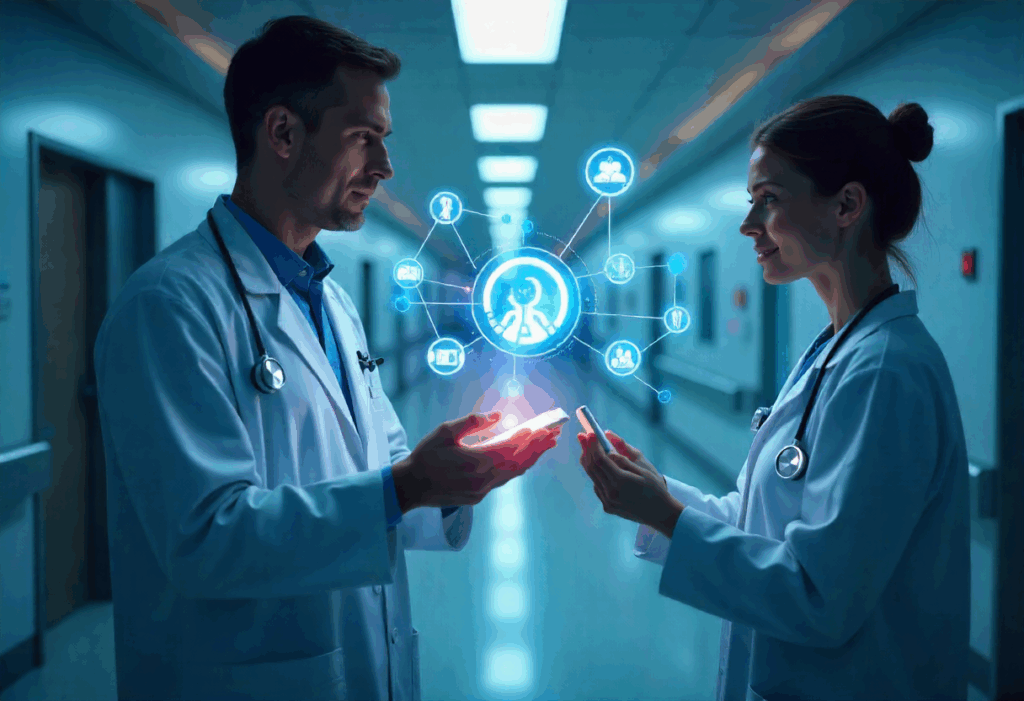
Final Thoughts
AI isn’t replacing doctors. It’s amplifying their intelligence.
From diagnostics to documentation, AI apps for doctors bridge the gap between data and decision — transforming how healthcare feels and functions.
In short, AI in healthcare is no longer about the future. It is the future — and it’s already here.
Curious about how AI is reshaping clinical documentation in 2025?
Explore Dictation, Transcription, or AI Medical Scribing in 2025: Choosing the Future of Healthcare Documentation to discover why AI medical scribes are emerging as the most efficient solution for modern healthcare professionals.Ready to take the next step? Visit DoraScribe’s homepage to see how our AI medical scribing platform helps physicians reclaim their time and focus on what matters most—patient care.

